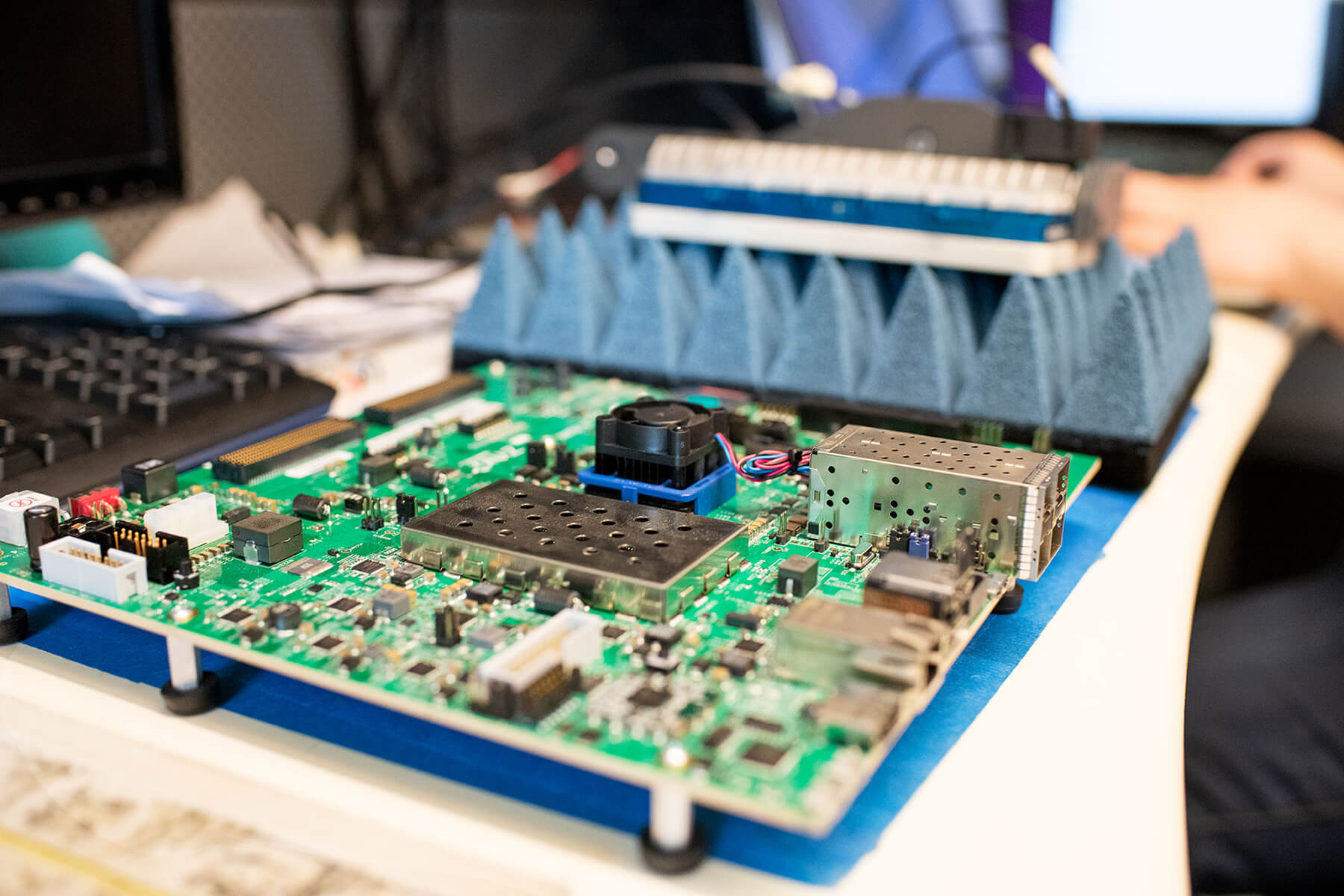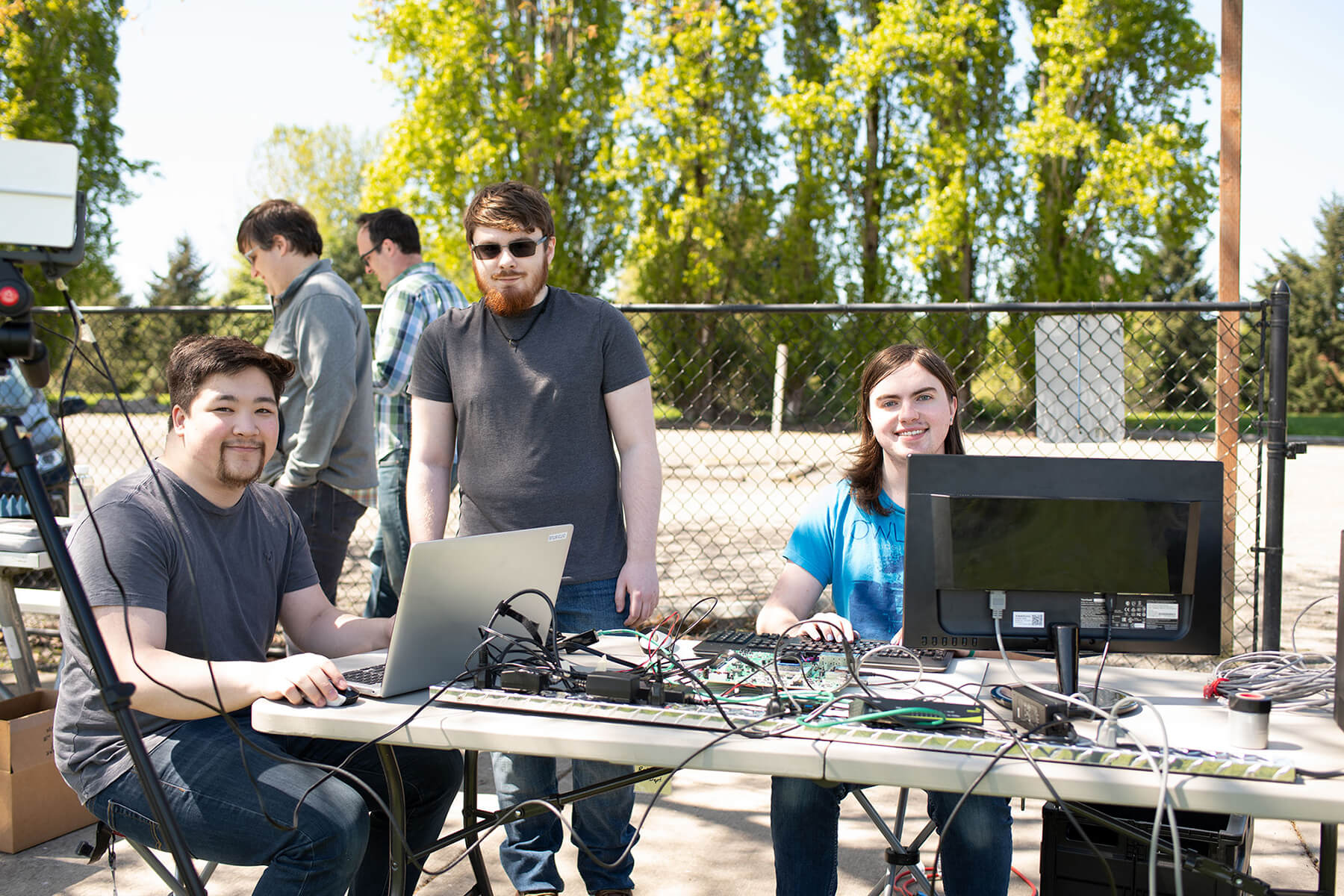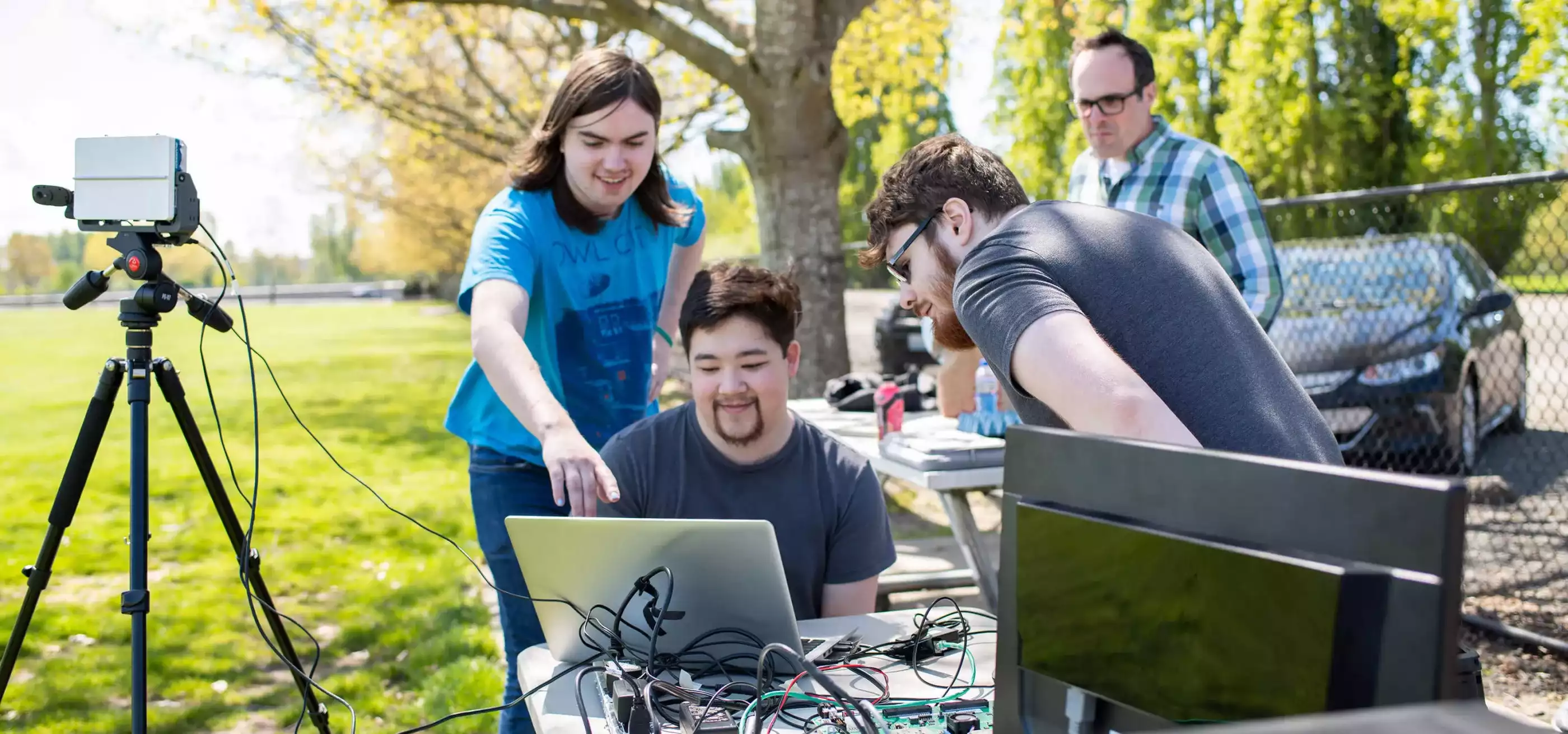Each year, student teams at DigiPen work together and with faculty on original games, animated films, and computer science and engineering projects. This past year, one group of trailblazing students in the Bachelor of Science in Computer Engineering program participated in a new co-op arrangement with Echodyne, a radar technology company based in Kirkland, Washington. The students completed the co-op for their third- or fourth-year project course, where the main learning objective is to design and implement an embedded computer system that integrates software and hardware.
Unlike a traditional internship, the student team involved in the co-op project (consisting of Ryan Price, Andrew Sentman, Joshua Yan, and early contributions by Vincent Messina) wasn’t working directly for the company. Instead, they had the opportunity to define and develop the scope of their own yearlong project, while receiving frequent technical input and feedback from Echodyne’s engineers and Dr. Jeremy Thomas, an associate professor of electrical and computer engineering and program director for the BS in Computer Engineering.
Thomas, the faculty advisor for third- and fourth-year student projects, initiated the co-op with the aim of “facilitating collaboration between DigiPen students and faculty with industry and academic partners.” Importantly, he says, these collaborations will “enhance student learning outcomes by promoting exploratory research, with an overarching goal of developing innovative solutions to problems relevant to society.”
Robert Worl, engineering product manager at Echodyne, was another early champion of the new relationship between the company and DigiPen. He had actually considered attending DigiPen in 1999 before pursuing an engineering degree elsewhere (DigiPen did not offer an engineering program at the time). So when Echodyne was in need of interns, DigiPen immediately came to mind.
“When I learned about [DigiPen’s computer engineering] program structure — the heavy focus on embedded programing and working on big hands-on projects every year — I immediately knew I had found something special,” Worl said. “Since then, we have hired seven interns from DigiPen, and they continue to be some of the highest-performing and most effective contributors.”
DigiPen’s project-based curriculum would also present a great opportunity to launch a new kind of collaboration between the school and the industry, one that would give students firsthand experience in tackling a complex engineering challenge with the added benefit of having direct access to state-of-the-art equipment and professional expertise.
Hands-On with EchoGuard
For the student project team, one of the perks of the co-op was working with advanced technology that was already being used experimentally in the real world. Echodyne’s EchoGuard is a compact, long-range 3D radar that provides perimeter security around sensitive facilities like airports, industrial complexes, and stadiums (including, recently, the airspace over Super Bowl LII). The team’s specific objective was to test a new algorithm that would help the radar system discern between objects of interest in real time.

“By default, the radar doesn’t discriminate between different objects [in densely cluttered environments],” said Joshua Yan, one of the project’s student team members and 2019 graduate from the engineering program. “Our system’s job was to decide what objects were part of the background, such as bushes, trees, and fences, and what objects were [relevant to the observer], like people, drones, and animals.”
The primary challenge of the project was in engineering a system that (1) wouldn’t use much memory, (2) could still handle large amounts of data, and (3) was able to keep up with the radar’s operation in real time. While the students didn’t start the project with much radar technology experience, the Echodyne arrangement gave the team regular face time with the company’s experts and an open line of communication for questions throughout the year.
“Their feedback was invaluable and played a huge part in our success,” Yan said. “They helped us get started and made sure that we were going in the right direction but still allowed us to take the lead on the design and implementation of the system.”
The scope of the project would eventually demand a variety of skillsets, testing the team’s knowledge of embedded systems, networking, multithreading, scripting, and algorithm design, as well as how to work within tight engineering constraints. The result was a fully functional device that successfully detected the desired targets in its final field test. And the project was more than a test of their technical expertise: The students also had a chance to practice their professional skills by presenting their final results to an audience of experts at Echodyne, similar to how an engineering team might present on their work at an industry conference.
“There is always more work that could be done, but we’re proud of what we managed to accomplish,” Yan said.
A Successful Collaboration
The radar project has been well received at Echodyne, a good sign for the possibility of future co-op partnerships. After their final presentation to the company, Worl reflected on the students’ efforts over the course of the project.
“The general conclusion amongst us here at Echodyne was that the students did a phenomenal job,” said Worl. “The amount of work they were able to complete on a very challenging project (and actually getting to the point of field-testing their product) was very impressive for a team with a full-time course load.”

Worl is optimistic that the co-op model can help students learn in ways that might not always be captured through a traditional internship experience.
“I am a huge advocate for early integration into the collaborative workplace,” Worl said. “[It’s] absolutely critical to develop the future generation of innovators and engineers. I’m personally excited to explore the extent of this space and see the development of a co-op model that can be used to enhance both the students’ education and their future opportunities.”
Based on the success of the Echodyne co-op, Dr. Thomas is working to expand the program to more industry and academic partners and potentially more DigiPen degree programs.
